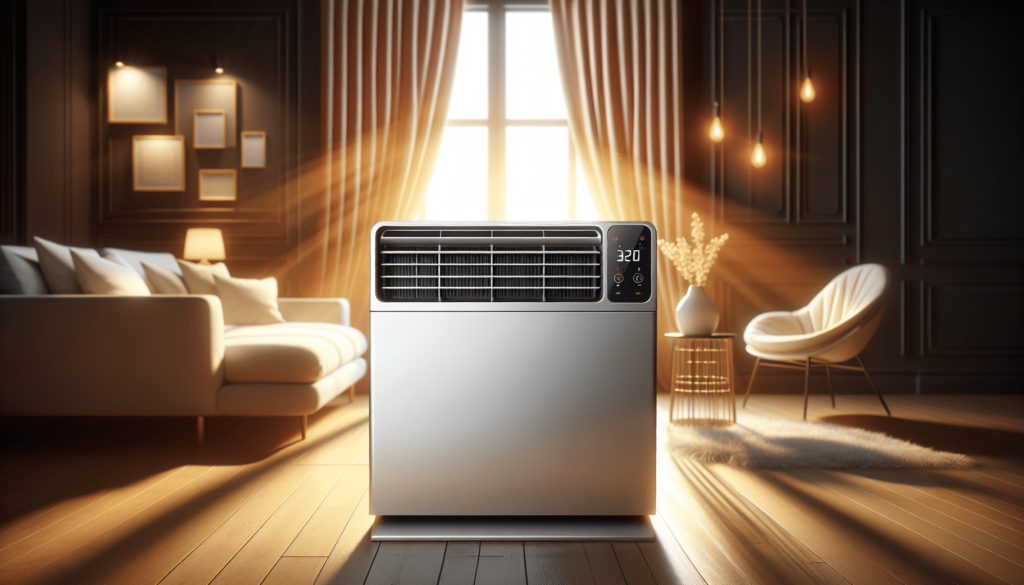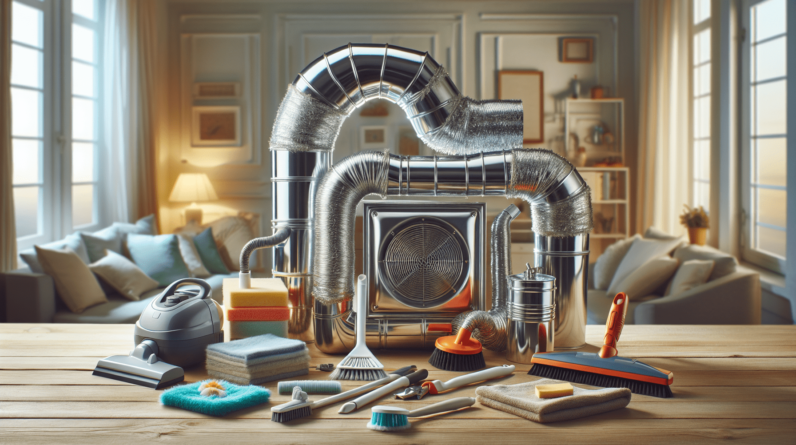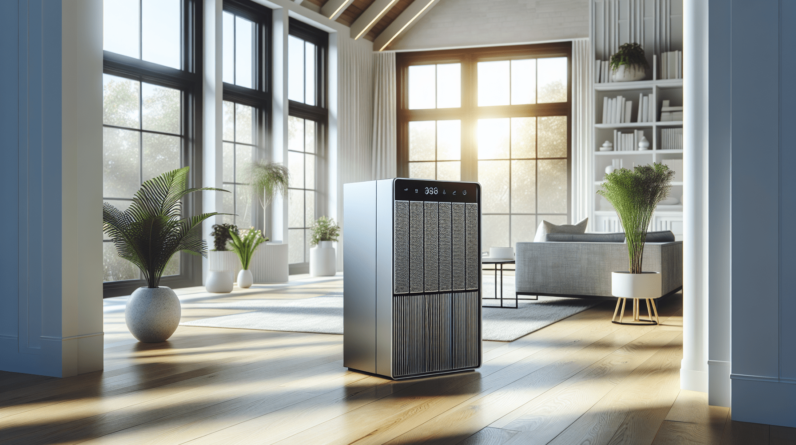

Have you ever found yourself wondering how to maintain a comfortable temperature in your home year-round without breaking the bank? A window unit air conditioner and heater could be the perfect solution for your climate control needs. Let’s take a closer look at how these devices work, their benefits, types, and how to choose the right one for your space.
Understanding Window Unit Air Conditioners and Heaters
Window unit air conditioners and heaters are compact, versatile appliances designed to maintain indoor comfort during extreme weather conditions. Unlike traditional HVAC systems that require ductwork, window units fit snugly into your window, making them ideal for apartments, small homes, or other limited spaces.
Features of a Window Unit
These units combine the capabilities to cool and heat a room effectively. Typically, they feature:
- Thermostat: To adjust the temperature as per your comfort level.
- Fan Settings: Multiple fan speeds provide flexibility for airflow.
- Energy Efficiency Ratings: Indicators like EER (Energy Efficiency Ratio) help determine operating costs.
- Remote Control Options: Modern units come with remote controls for convenient operation.
How Does a Window Unit Air Conditioner Work?
A window air conditioning unit works by using a refrigeration cycle to cool and dehumidify indoor air. Typically, here’s how the process unfolds:
- Air Intake: Warm air from the room is drawn into the unit through the front grille.
- Cooling Process: The air passes over cold evaporator coils, where refrigerant absorbs heat from the air.
- Dehumidification: Moisture from the air condenses on the evaporator coils, reducing humidity levels.
- Condensation Drainage: Excess moisture typically drains outside through a connected hose or by gravity.
- Heat Release: The now-cool air is blown back into the room through the front vents.
These components work in tandem to ensure you enjoy a comfortable environment, especially during sweltering summer months.

How Does a Window Heater Work?
Conversely, a window heater operates by directly warming the air before dispersing it into the room. This is typically achieved through:
- Air Intake: The heater draws in air from the room.
- Heat Generation: An internal heating element, often electric, warms the air.
- Air Circulation: A fan pushes the heated air back into the space, gradually raising the room’s temperature.
It’s worth noting that some modern units use heat pumps that can reverse the cycle, providing both heating and cooling options.
Benefits of Window Units
Opting for window unit air conditioners and heaters brings various advantages that can enhance your overall living experience.
Cost-Effective
Compared to central HVAC systems, window units are generally more affordable to purchase and install. They are especially valuable for individuals renting apartments or looking to modify existing spaces without significant renovations.
Energy Efficient
Window units are often designed with energy-saving features, which can lead to lower utility bills. By cooling or heating only the rooms you occupy, you avoid the energy waste associated with central air conditioning systems that cool entire homes.
Easy Installation and Mobility
Many window units can be installed without professional help. They come with installation kits that allow for straightforward mounting. Plus, if you move, you can easily uninstall and take the unit with you.
Customizable Comfort
With window units, you have the freedom to adjust the temperature settings according to personal preferences. Rather than relying on a central system that controls the entire house, you can create your specific comfort zone.

Types of Window Air Conditioners and Heaters
Not all window units are created equal; understanding the different types can help you choose the best option for your needs.
Traditional Window Units
These are the most common types of window ACs and heaters. They require manual installation and generally offer basic features like adjustable temperature settings and fan speeds. They are ideal for those who want a straightforward, cost-effective solution.
Digital/Smart Window Units
Smart window units can connect to Wi-Fi, allowing you to control the temperature from your smartphone or through voice-activated assistants. They often feature programmable timers and energy-saving modes, making them a more convenient choice for tech-savvy individuals.
Heat Pumps
Heat pumps can function as both air conditioners and heaters, making them highly versatile. They work by absorbing heat from the outside air and transferring it indoors during winter, while they do the opposite in summer. This dual functionality is an attractive feature for many homeowners.
Portable Window Units
Portable window units offer mobility as they can be moved from room to room and require no permanent installation. While typically less powerful than traditional models, they provide a quick solution for cooling or heating in different areas of your home.

Choosing the Right Window Unit for Your Space
Finding the perfect window unit for your specific needs involves several factors. Let’s break these down.
Room Size
The size of the room you want to cool or heat will largely determine the capacity you need. Units are rated in BTUs (British Thermal Units), which measures their cooling or heating power. Generally, the larger the room, the higher the BTU rating you will need.
Here is a quick reference chart for BTU requirements based on room size:
| Room Size (sq. ft.) | BTU Rating |
|---|---|
| Up to 150 | 5,000 – 6,000 |
| 150 – 250 | 6,000 – 7,000 |
| 250 – 350 | 7,000 – 8,000 |
| 350 – 450 | 8,000 – 10,000 |
| 450 – 550 | 10,000 – 12,000 |
| 550 – 700 | 12,000 – 14,000 |
Energy Efficiency
Look for units with the Energy Star label, as these devices have been certified for their energy-efficient performance. A higher EER or SEER (Seasonal Energy Efficiency Ratio) rating usually indicates lower energy consumption, which can be a big plus for your budget.
Noise Level
Most window units produce some noise, but some are quieter than others. Look for models that emphasize low noise levels if you’re particularly sensitive to sound while sleeping or working.
Installation Ease
Some window units are easier to install than others. If you’re not handy or prefer a hassle-free setup, consider a unit that comes with an easy-to-follow installation guide or even offers a dropped-in service.
Additional Features
Lastly, think about features that could elevate your experience, such as programmable timers, remote controls, and multiple settings for fan speeds. These can enhance convenience and comfort while using the unit.
Installation Tips for Window Units
Installing a window unit can seem daunting, but with a few tips, the process can be a breeze.
-
Read the Manual: Before starting installation, always refer to the user manual provided by the manufacturer. It has specific instructions tailored to that model.
-
Check Window Compatibility: Ensure your window is compatible with the unit. Most window units fit in standard double-hung or sliding windows but may not work well with casement windows.
-
Gather Tools: Prepare necessary tools such as a screwdriver, measuring tape, and level to ensure a secure installation.
-
Secure the Unit: Use brackets or support arms as indicated in the manual to secure the unit in your window. Ensure it’s firmly placed to avoid any potential accidents.
-
Seal Gaps: Once installed, seal any gaps around the window unit with weather stripping or foam insulation to enhance energy efficiency and prevent drafts.
Maintenance of Window Units
Regular maintenance is crucial in ensuring your window unit operates at peak efficiency and lasts as long as possible.
Clean or Replace Filters
One of the simplest and most effective maintenance tasks is regularly cleaning or replacing the air filters. Clogged filters can restrict airflow, reducing the unit’s efficiency. Typically, you should check filters every month during peak usage and clean or replace them as needed.
Inspect Coils
Inspect both the evaporator and condenser coils to ensure they are free from dirt and debris. Dirty coils can hinder the cooling process. Cleaning them once a season can vastly improve efficiency.
Drainage Maintenance
Make sure any drainage lines are clear and functioning properly. Water buildup can lead to mold growth and other issues. Check for blockages and ensure that water drains away from the unit.
Check for Leaks
Inspect the unit for any refrigerant leaks, which can lead to decreased performance and higher energy costs. If you suspect a leak, it’s best to contact a professional for repair.
Seasonal Preparation
Before switching from cooling to heating or vice versa, give your unit a thorough cleaning. Also, remove any window unit covers or screens that could hinder performance.
Troubleshooting Common Issues
You might encounter some common issues with window units. Here’s how to troubleshoot them.
Not Cooling Properly
If your unit isn’t cooling effectively, try the following steps:
- Check if the filters are dirty.
- Ensure the unit is set to “cool” mode.
- Inspect the thermostat setting; it should be lower than the current room temperature.
Strange Noises
If you’re hearing unusual sounds, it could be a sign of a loose or damaged fan. Check to ensure everything is securely in place.
Water Leaks
Water pooling around the unit can result from improper installation or a clogged drain line. Check for blockages in drainage pathways. If the unit was improperly installed, recheck the installation according to the manufacturer’s instructions.
Conclusion
Using a window unit air conditioner and heater can offer you an affordable and efficient way to control your home’s climate. By understanding how these units work, the different types available, and how to select, install, and maintain them, you’re setting yourself up for comfort and satisfaction in any season. Don’t let the weather dictate your comfort; take charge with the right window unit tailored to your needs!






